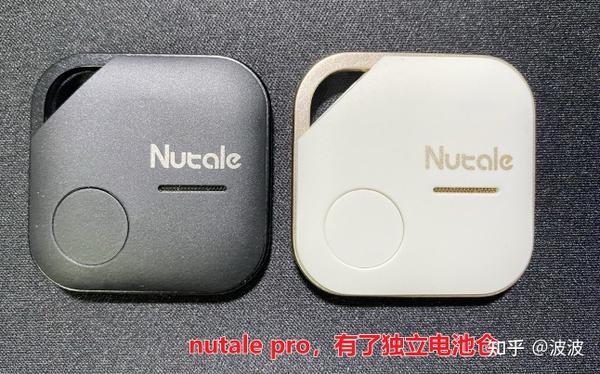A Flexible-Frame-Rate Vision-Aided Inertial Object Tracking System For…
페이지 정보

본문
 Real-time object pose estimation and monitoring is challenging but essential for ItagPro emerging augmented reality (AR) purposes. Usually, iTagPro website state-of-the-artwork methods address this problem utilizing deep neural networks which indeed yield satisfactory results. Nevertheless, the high computational value of those methods makes them unsuitable for mobile devices where real-world purposes usually take place. As well as, iTagPro smart tracker head-mounted shows equivalent to AR glasses require a minimum of ninety FPS to keep away from motion sickness, which additional complicates the problem. We suggest a flexible-frame-price object pose estimation and monitoring system for mobile units. It's a monocular visual-inertial-based mostly system with a shopper-server structure. Inertial measurement unit (IMU) pose propagation is carried out on the client facet for top velocity monitoring, iTagPro key finder and RGB image-based mostly 3D pose estimation is carried out on the server facet to obtain accurate poses, after which the pose is shipped to the consumer side for visible-inertial fusion, where we propose a bias self-correction mechanism to scale back drift.
Real-time object pose estimation and monitoring is challenging but essential for ItagPro emerging augmented reality (AR) purposes. Usually, iTagPro website state-of-the-artwork methods address this problem utilizing deep neural networks which indeed yield satisfactory results. Nevertheless, the high computational value of those methods makes them unsuitable for mobile devices where real-world purposes usually take place. As well as, iTagPro smart tracker head-mounted shows equivalent to AR glasses require a minimum of ninety FPS to keep away from motion sickness, which additional complicates the problem. We suggest a flexible-frame-price object pose estimation and monitoring system for mobile units. It's a monocular visual-inertial-based mostly system with a shopper-server structure. Inertial measurement unit (IMU) pose propagation is carried out on the client facet for top velocity monitoring, iTagPro key finder and RGB image-based mostly 3D pose estimation is carried out on the server facet to obtain accurate poses, after which the pose is shipped to the consumer side for visible-inertial fusion, where we propose a bias self-correction mechanism to scale back drift.
We additionally suggest a pose inspection algorithm to detect tracking failures and incorrect pose estimation. Connected by excessive-velocity networking, our system helps versatile body charges as much as a hundred and twenty FPS and ensures high precision and actual-time monitoring on low-finish units. Both simulations and actual world experiments present that our method achieves accurate and robust object monitoring. Introduction The aim of object pose estimation and tracking is to find the relative 6DoF transformation, together with translation and rotation, between the item and the digital camera. That is difficult since real-time efficiency is required to ensure coherent and smooth person expertise. Moreover, with the event of head-mounted shows, frame price demands have increased. Although 60 FPS is ample for smartphone-based purposes, more than 90 FPS is anticipated for AR glasses to prevent the motion sickness. We thus propose a lightweight system for accurate object pose estimation and monitoring with visual-inertial fusion. It uses a consumer-server architecture that performs quick pose tracking on the client facet and iTagPro reviews correct pose estimation on the server facet.
The accumulated error or the drift on the shopper facet is diminished by knowledge exchanges with the server. Specifically, iTagPro key finder the shopper is composed of three modules: a pose propagation module (PPM) to calculate a rough pose estimation by way of inertial measurement unit (IMU) integration; a pose inspection module (PIM) to detect monitoring failures, together with lost monitoring and enormous pose errors; and a pose refinement module (PRM) to optimize the pose and update the IMU state vector to appropriate the drift based mostly on the response from the server, which runs state-of-the-artwork object pose estimation strategies using RGB photos. This pipeline not only runs in actual time but additionally achieves high body charges and accurate tracking on low-finish cell devices. A monocular visible-inertial-primarily based system with a consumer-server structure to track objects with flexible body rates on mid-degree or low-stage cellular gadgets. A fast pose inspection algorithm (PIA) to quickly decide the correctness of object pose when tracking. A bias self-correction mechanism (BSCM) to enhance pose propagation accuracy.
A lightweight object pose dataset with RGB pictures and IMU measurements to evaluate the quality of object tracking. Unfortunately, RGB-D images are usually not at all times supported or practical in most real use circumstances. As a result, we then deal with strategies that do not rely on the depth information. Conventional methods which estimate object pose from an RGB picture could be labeled either as feature-based mostly or template-based mostly. 2D photos are extracted and matched with those on the article 3D model. This kind of method nonetheless performs effectively in occlusion cases, but fails in textureless objects with out distinctive options. Synthetic images rendered round an object 3D model from completely different camera viewpoints are generated as a template database, and the enter picture is matched in opposition to the templates to find the object pose. However, these strategies are sensitive and never strong when objects are occluded. Learning-based strategies may also be categorized into direct and iTagPro USA PnP-primarily based approaches. Direct approaches regress or infer poses with feed-ahead neural networks.

- 이전글홈페이지제작 삼성전자, AI 경쟁력 ‘국내 1위’ 25.09.14
- 다음글의정부소년사건변호사 위메프, 파산 수순 밟나···피해자들 “보상 전무, 처참” 25.09.14
댓글목록
등록된 댓글이 없습니다.
